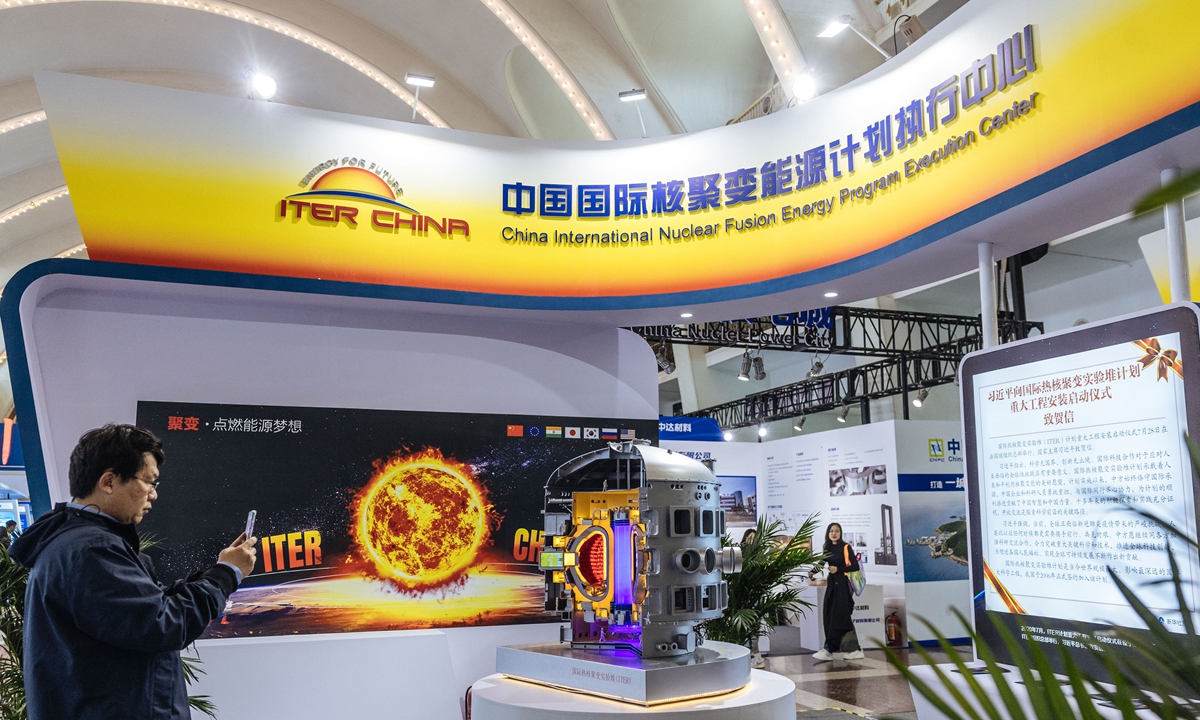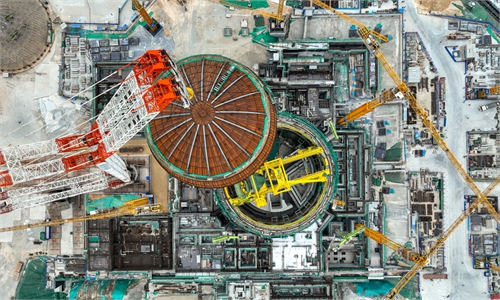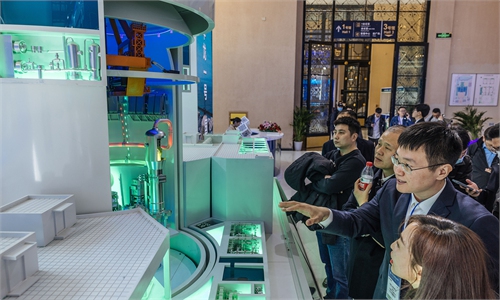IN-DEPTH / IN-DEPTH
China opens ten nuclear technology research facilities to the world to enhance international cooperation

A man takes a photo of an exhibit at the 2024 China International Nuclear Industry Exhibition in Beijing on March 19, 2024. The exhibition is expected to attract the participation of more than 110 renowned domestic and international companies and over 10,000 professionals from more than 10 countries. Photo: Li Hao/GT
China National Nuclear Corporation (CNNC) has opened ten of its nuclear technology research facilities and testing platforms, including China's new-generation "artificial sun" Huanliu-3 (HL-3) tokamak, to the world for the first time. The move will further enhance China's influence in nuclear science and technology globally, injecting strong "nuclear power" into promoting win-win cooperation worldwide, the Global Times learned from CNNC at a press conference on March 19 in Beijing during the 17th China International Nuclear Industry Exhibition.
This batch of facilities also include the world's highest-energy compact proton cyclotron accelerator the Beijing Radioactive Ion-beam Facility (BRIF), one of the "world's six major neutron sources" China Advanced Research Reactor, the Beishan Underground Research Laboratory (Beishan URL) located 560 meters underground, and the Minjiang Test Reactor for medical isotope research, among others. Many of these facilities have reached world-class level and even lead the industry globally, showcasing the hard work of Chinese researchers and demonstrating the "hardcore strength" of China's nuclear industry innovation.
The HL-3 tokamak, China's largest and most advanced tokamak, is designed to support the operation of the International Thermonuclear Experimental Reactor (ITER) and the development of future fusion reactors.
The Beishan URL in Northwest China's Gansu Province, China, is the country's first large underground research facility used for the safe disposal of high-level radioactive waste. It is an important research facility for the International Atomic Energy Agency and the China Atomic Energy Authority, playing a crucial role in China's nuclear fuel closed-loop technology innovation system.
The BRIF, the only operational online isotope separation radioactive ion beam facility in Asia, can produce over 60 stable nuclear beams and 55 radioactive nuclear beams. It fills the technological gap in China's medium-energy high-current proton cyclotron accelerator and high-resolution isotope separator, reaching an advanced level internationally.
The BRIF conducts research in nuclear physics basics, nuclear physics applications, and nuclear data, promoting basic research and application transformation, achieving a number of high-level scientific achievements. Researchers from the facility have cooperated with teams from more than ten countries including Russia, the US, Germany, Japan, and Poland, attracting many top international scientists to come to China to conduct cutting-edge research.
The opening of these research facilities and testing platforms by China to the world is expected to promote the development of nuclear technology worldwide. Sumair N. Khan, Science and Technology Counselor at the Pakistani Embassy in China, told the Global Times that these open research facilities are crucial for developing countries, especially for countries like Pakistan. He highlighted the importance of facilities like China's advanced research reactor, micro-neutron source reactor, and nuclear environmental simulation facilities for Pakistan.
"Developing countries may not have the research conditions similar to China but are eager to utilize Chinese research facilities to train researchers and receive support for their research work," Zhang Libo, vice president of the China Institute of Atomic Energy, under CNNC, told the Global Times. He emphasized the importance of international cooperation in nuclear science and technology for mutual benefit and scientific progress.
Zhang also believes that CNNC's opening of nuclear technology-related research facilities and test platforms to the world will promote high-level international openness. He stated that by attracting international peers to utilize these facilities, China can understand the direction of international research, grasp the dynamics of global economic development, and integrate into the global research environment.

Photo: Courtesy of CNNC



